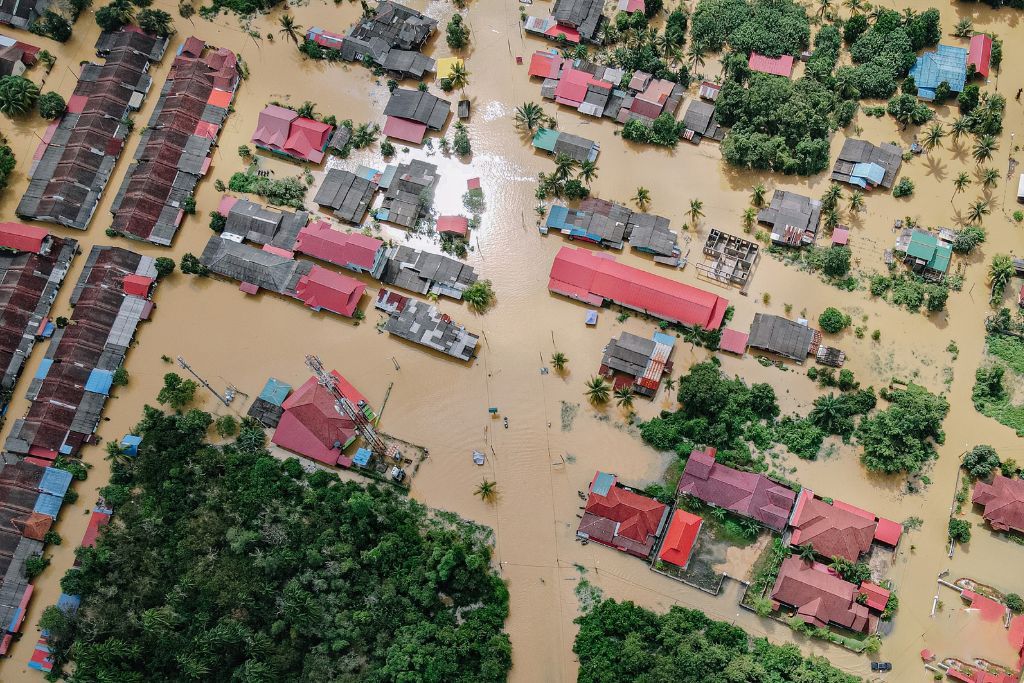Climate change presents an acute threat to billions of people around the globe. Roughly 40% of the world’s population is vulnerable to the effects of global warming due to their location, with small island states being disproportionally affected. As the climate crisis deteriorates, we must consider investing in climate-resilient communities. Resilient communities cannot stop global warming entirely but resilient design can help people lead healthier, happier lives in the wake of a climate crisis.
—
The impending climate crisis will change the way we live forever. Underprepared communities are almost certain to dissolve, and billions of people will be displaced from their homes. This will place significant pressure on the global community and may lead to a domino effect of war, famine, and increased poverty.
While the effects of climate change may be severe, we can prepare for some climate events by building more resilient communities. Resilient communities are designed to weather the proverbial storm and help folks pick up their lives after an extreme climate event.
Resilient communities are also economically robust and are built to adapt to rapidly changing markets in the event of a catastrophe. This means that folks who live in areas affected by climate change can pivot towards a more sustainable, low-impact way of life without having to compromise their individual goals and dreams.
You might also like: 4 Climate Adaptation Strategies From Around the World
How to Build Climate-Resilient Communities
1. Climate Resilient Buildings
As the world continues to warm, more architects are turning their attention to more durable and sustainable designs. Resilient building design places a premium on hardiness, and incorporates design elements like:
- Deep, well-built foundations to weather high winds and earthquakes;
- Pliable materials that are designed to withstand extreme weather events;
- Alternative forms of power (e.g. solar or wind) to reduce reliance on national grids;
- Improved thermal efficiency to keep buildings cool in the summer and warm in the winter.
Resilient design is inherently sustainable, too. Folks who build resilient buildings are erecting structures that will last multiple generations. This reduces the need for high-energy construction efforts and ensures that homes are built to withstand extreme climate events.
Resilient buildings can help us all use less energy, too. Communities who live in thermo-efficient houses use less gas or electricity to heat and cool their homes during the peak of winter or summer. This is particularly important today, as global conflicts and high energy demands have increased oil prices and strained consumers’ pockets.
2. Essential Infrastructure
Resilient houses that are designed to weather storms and keep homeowners cool are key to the long-term success of at-risk communities. However, the infrastructure that supports vulnerable populations must be improved to meet the demands of tomorrow, too.
Small governments who are looking to level up their infrastructure should opt for sustainable construction materials whenever possible. Materials like bendable concrete are designed to be shock resistant and can help communities get back on their feet after a catastrophe. Bendable concrete is infused with carbon dioxide, too, which strengthens the concrete and reduces carbon emissions.
Most infrastructure, including roads, buildings, and dams, is built from concrete. However, many building projects do not require concrete, meaning architects can explore more eco-friendly alternatives. Constructors who utilise reclaimed materials keep waste from falling into landfill and can build more innovative sites using salvaged goods. Some constructors even utilize timber from trees that fell during storms, meaning a climate catastrophe can be a catalyst for renewed growth.
3. Access to Education
Data collected by the Organisation for Economic Co-operation and Development (OECD) shows that education attainment is a strong predictor of financial success. Adults with a bachelor’s degree earn an average of 44% more than their peers, and those with a master’s or doctoral degree earn 98% more than the global average.
However, climate catastrophes can significantly disrupt a child’s ability to learn and may undermine communal education rates. This is a serious issue for at-risk groups, as a creative, research-based response to climate catastrophe is necessary for communities to rebound after a disaster.
Vulnerable communities can invest in their future by allocating extra funding to school boards and foregrounding the importance of environmental education in public curriculums. Children who are taught environmental stewardship in their classrooms are more likely to take a progressive approach to combating climate change and may be able to support their community during a crisis.
Communities can also invest in informal education about the environment, such as partnering with organisations to host sustainable outdoor events. These programmes can also provide real-world examples of how to live a sustainable lifestyle, such as by promoting recycling and composting, and by encouraging people to use alternative transportation options. It is also a great way for the community to get together.
Young people who feel supported by their community also may be more likely to return home after receiving a degree from a university. This increases the collective resilience of the community, as towns with high education rates are more adaptable and self-reliant in the face of an emergency.
4. Healthcare
The global climate crisis will almost certainly put a strain on healthcare infrastructure. Warmer weather disrupts ecosystems and can lead to a surge of disease-carrying insects and infectious diseases. This will lead to a rise in deadly illnesses like malaria, Lyme disease, and Rocky Mountain spotted fever.
Climate catastrophes place acute stress on community healthcare providers, too. Few hospitals are not built to care for thousands of patients with life-threatening conditions and many local healthcare providers will be overwhelmed in the face of a weather disaster.
Communities can improve their resiliency and reduce the loss of life following a climate crisis by creating coordinated response plans that get people the help they need. Social media could also play a central role in this response plan, as platforms like Twitter and Facebook are the perfect place to share public information and minimise the impact of a climate catastrophe.
Conclusion
We will all need to adapt our lifestyles as global temperature rise. However, vulnerable communities need to be properly supported if we want to avoid mass displacement. Governments can improve the resiliency of local communities by funding public education and improving infrastructure. Folks who live in at-risk areas can play their part by pursuing environmental education and adopting more sustainable materials when constructing homes and houses.
You might also like: Best Places to Live to Avoid Climate Change in 2023


















